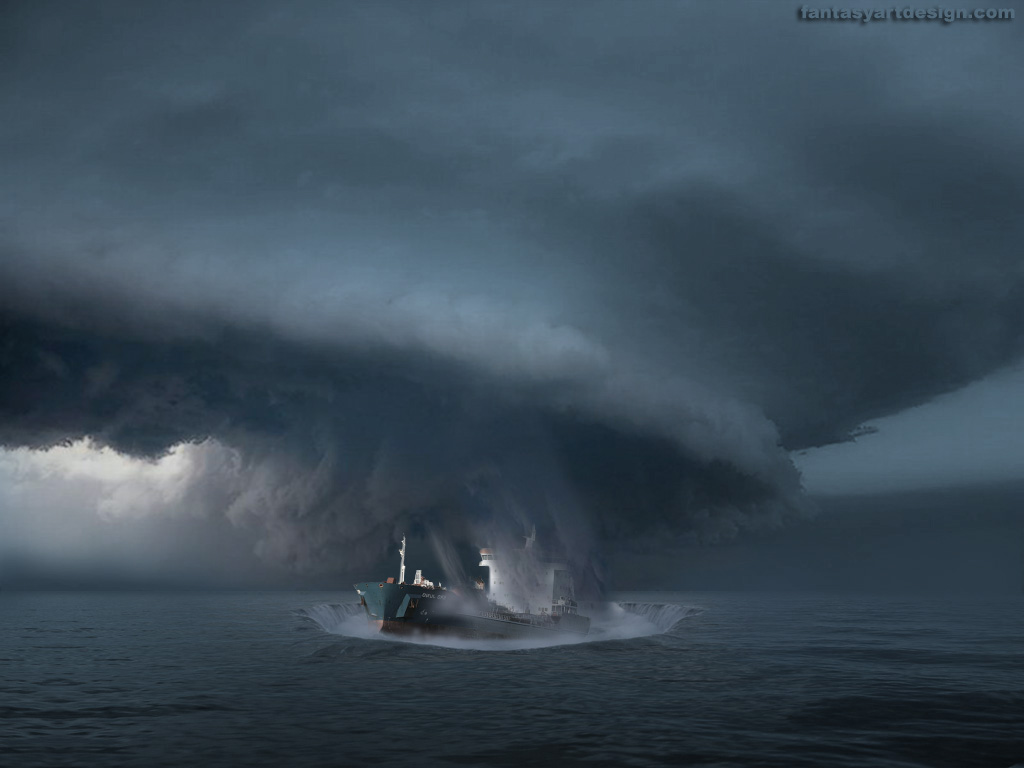The theory which explain the origin of earth and this Universe is called Big Bang Theory. According to this theory all matter in the Universe was, at one time, concentrated in a giant mass (a black hole?) that blew apart about 10 to 20 billion years ago (bya) and is still expanding.
It is thought that our solar system had its origins when, about 5 bya, triggered by some unknown cause, a cloud of interstellar dust and gases collapsed and condensed. Some of the matter in the central mass contracted under its own gravity, condensed, and heated until forces were so strong that thermonuclear reactions began, and this was the origin of our star, the Sun.
Origin of Planets:
About 4.6 to 4.5 billion year ago, a disk-shaped cloud of subsidiary smaller lumps, pieces, dust, gases, etc. orbiting the sun subsequently coalesced and condensed to form theplanets, satellites, asteroids, comets, etc.
Formation Of Atmosphere:
It is thought that Earth began as a cold world, and the very first atmosphere may have been hydrogen gas, but since that is so light weight and very chemically reactive, most of it would have floated off into space or reacted with other substances, thus would have been rapidly dissipated. Then some other volcanic activities and other chemical reaction took place.The inner four, solid planets have started out with similar atmospheres of H2O, CO2, CO, and N2. These chemicals made up the atmosphere of our planet for the first 1 billion years, and initially, provided similar atmospheres for the other three solid planets.However, the distance of each of these planets from the sun has influenced what subsequently took place there:
- Mercury is too close to the sun and too hot. Any water that might have been there (and any other volatile chemicals) would, long ago, have evaporated into space.
- Venus also is too close to the sun to have any surface water.
- Mars, on the other hand, is too far away from the sun, and so is too cold. Any water and carbon dioxide present on the planet are frozen solid in the “ice” cap. Also, the planet is too small to hold very much atmosphere, and there is not enough of a greenhouse effect to keep the planet warm. Thus, there is essentially no atmosphere left.
Formation of Earth Surface:
Over the next 3.5 billion years, the amount of CO2 in our atmosphere was reduced as it became incorporated into rocks (limestone is CaCO3 and forms when H2O + CO2 --> H2CO3and H2CO3 + Ca++ --> CaCO3 + 2H+). The liquid oceans formed about 3.8 billion years ago, and life has been present for nearly as long. Evidence would indicate that on early Earth, there was much more volcanic activity, many more electrical storms, and more violent and destructive meteor impacts. Because of this impact heating (and Earth’s internal heat) the Earth subsequently melted, and heavier molten materials sank to the center, forming the core, while lighter ones floated to surface and formed the crust. Thus Earth now has several layers:
- A central core composed of very dense metals such as iron and nickle
- The mantle, which actually consists of several layers of varying composition, and is a molten, medium density, viscous liquid
- The crust floats on the outside. Because the minerals in the crust are cooler, they have formed strong, rocky layers collectively referred to as the lithosphere.
The atmosphere was made largely of water vapor (H2O), carbon dioxide (CO2), carbon monoxide (CO), nitrogen (N2), methane (CH4), and ammonia (NH3). As the surface of Earth cooled again, torrential rains of this mixture formed the first seas, the “primordial soup.”
1. First, organic monomers (simple sugars, amino acids, fatty acids, and nucleotides) would have to be synthesized abiotically from inorganic substances like methane, carbon dioxide, and ammonia. Around all 20 amino acids, and a number of sugars, lipids, and nucleotides have been obtained from these inorganic substances(H2O, H2, CH4 and NH3).
2. The second step would be the formation of organic polymers and genetic material from the existing monomers (polysaccharides from simple sugars, proteins from amino acids, and RNA from nucleotides), possibly using hot sand or finely divided clay as a catalyst.
3. Thirdly, it is thought that non-living aggregates of these polymers formed. These may have exhibited some properties characteristic of living organisms, but were NOT ALIVE, and did not have all the properties of living organisms. In a research laboratory, scientists have seen mixtures of proteins, lipids, and carbohydrates form globules. If the proteins involved happen to be enzymes, these globules can even carry on "metabolic" activity, although they have no means to replicate themselves. Several widely-accepted theories as to how this may have happened include the possibly involvement of damp, zinc-containing clay as a catalyst to help the nucleotides polymerize first into RNA, and later into DNA.
4. It is thought, then, that about 4.1 to 3.5 billion years ago, the first prokaryotes, like bacteria, came into existance. It is difficult to pinpoint a date for this because bacteria don't have skeletons to leave behind. The first “fossils” (remains of colonies/secretions) of prokaryotes seem to be this age. Once the first cells, the first living organisms, the first prokaryotes came into existance, then the Theory of Evolution takes over to provide an explanation for how (not why) these primitive cells diversified into the five kingdoms of life which we recognize today.
Initially, the energy needed for growth and development was supplied by glycolysis and fermentation. There was no free oxygen in the early atmosphere, and indeed, any organisms living back then would have probably been poisoned/killed by this highly-reactive chemical. Only later, as photosynthetic organisms released increasing amounts of this toxic waste into the atmosphere, did the process of cellular respiration evolve as a means of making use of this oxygen.





















